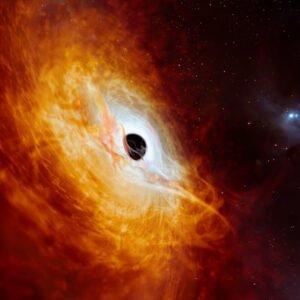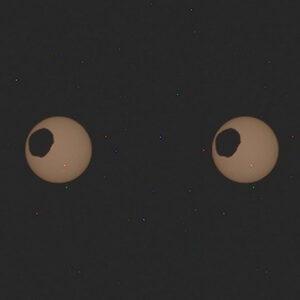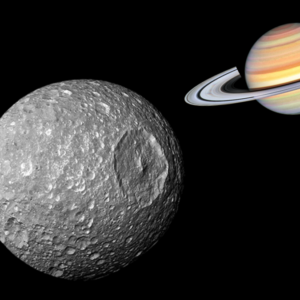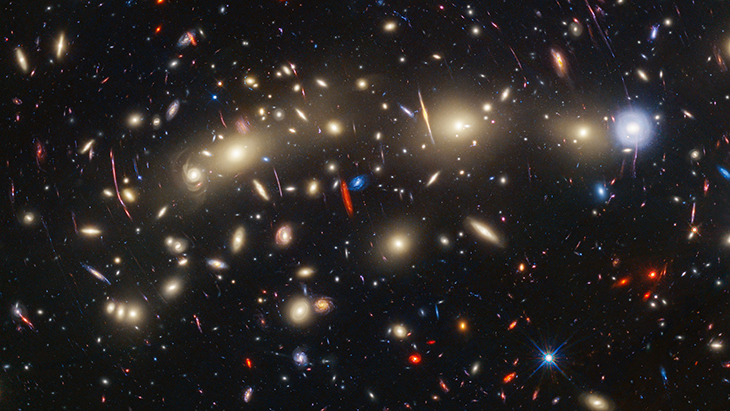
In a remarkable demonstration of technological prowess, NASA orchestrated a celestial spectacle by simultaneously directing the Hubble and James Webb space telescopes toward a designated expanse of galaxies, thereby crafting an unparalleled panorama of the cosmos.
This panoramic composition captures the galaxy cluster MACS0416, situated a staggering 4.3 billion light-years away from Earth, in a mesmerizing blend of visible and infrared light. The result is a breathtaking tapestry that extends beyond the boundaries of the cluster, featuring an array of galaxies, along with intermittent celestial sources undergoing fluctuations likely attributed to gravitational lensing—a phenomenon involving the distortion and magnification of light from distant background entities.
To fashion this visual masterpiece, the spectrum of light was methodically color-coded, assigning blue hues to the shortest wavelengths, red hues to the longest wavelengths, and green hues to intermediate wavelengths. This comprehensive spectrum, spanning from 0.4 to 5 microns, unveils a vivid and captivating landscape of galaxies, as elucidated by NASA on its official website.
The distinctive colors in the image offer valuable insights into the distances of galaxies. Galaxies tinted in blue hues are generally closer and often exhibit robust star formation, a phenomenon adeptly discerned by the Hubble telescope. Conversely, galaxies with reddish hues tend to be more distant, a revelation facilitated by the James Webb telescope. Some galaxies appear intensely red due to an abundance of cosmic dust, which selectively absorbs the bluer wavelengths of starlight.
Notably, MACS0416 comprises two galaxy clusters in the gradual throes of collision, destined to eventually merge into a singular cosmic entity long after our bones have returned to dust. Examining this celestial ballet with both telescopes provides a dual perspective, akin to a celestial two-for-one deal. The team behind this endeavor harbors a particular fascination for “transients”—objects that exhibit significant variations in light signals throughout the observational period. As the telescopes capture this cosmic collision, they unveil a spectacle that not only chronicles the past but also hints at the dynamic and evolving nature of the universe.
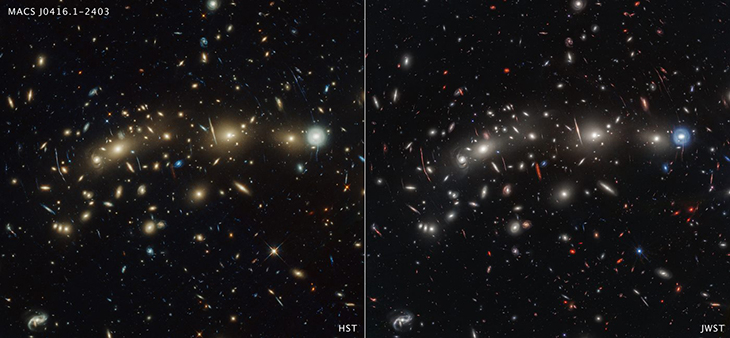
They discovered 14 transient events within the observed area. Among them, twelve transients were situated in three galaxies undergoing significant gravitational lensing, suggesting they are likely individual stars or multiple-star systems experiencing brief, intense magnification. The remaining two transients were found within background galaxies with more moderate magnification, and they are presumed to be supernovae.
“We’re calling MACS0416 the Christmas Tree Galaxy Cluster, both because it’s so colorful and because of these flickering lights we find within it. We can see transients everywhere,” said Haojing Yan of the University of Missouri in Columbia as well as the lead author of one paper describing the scientific results.
A specific transient, dubbed “Mothra” in reference to a colossal monster from the Godzilla universe, appears in the image gravitationally lensed approximately 4,000 times. This phenomenon leads the team to hypothesize the presence of another unseen object in the foreground.
What are your thoughts? Please comment below and share this news!
True Activist / Report a typo
